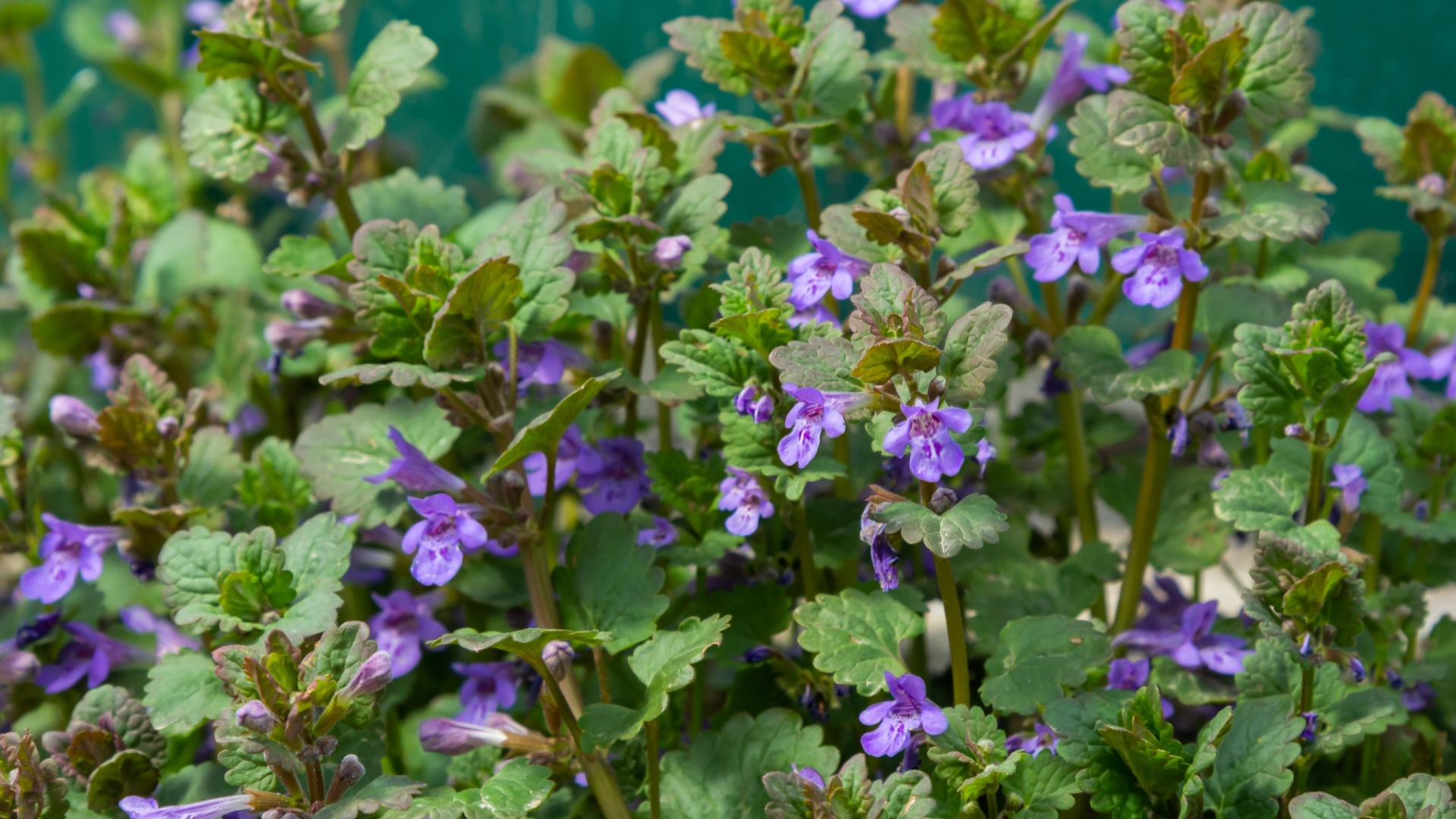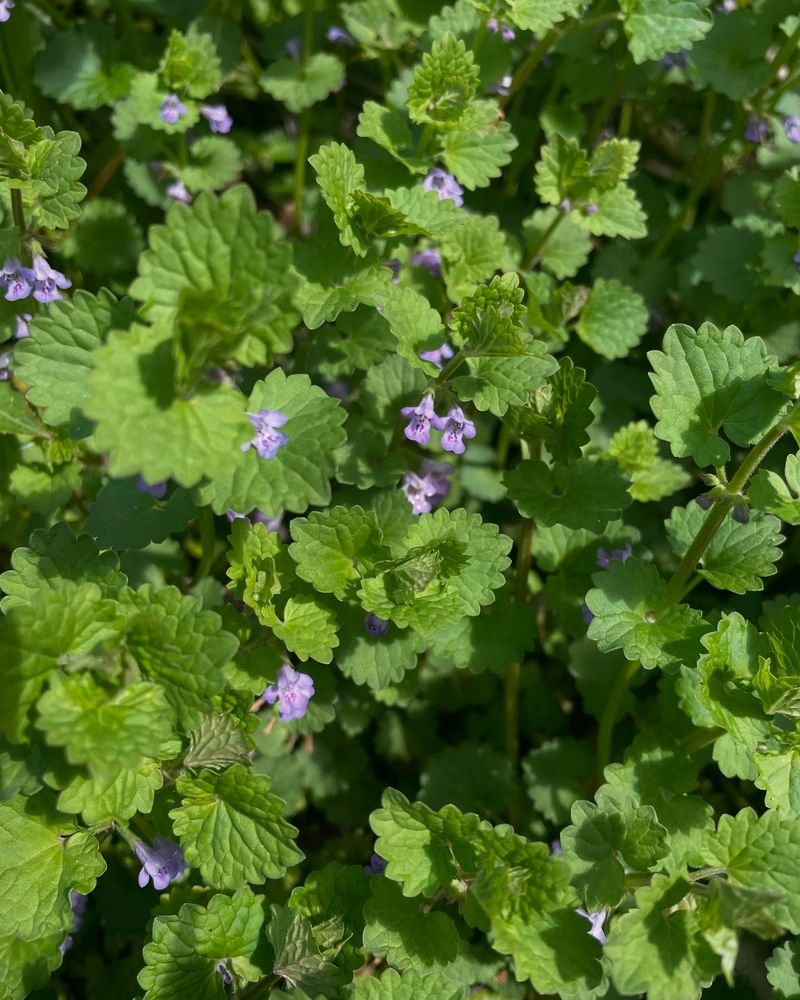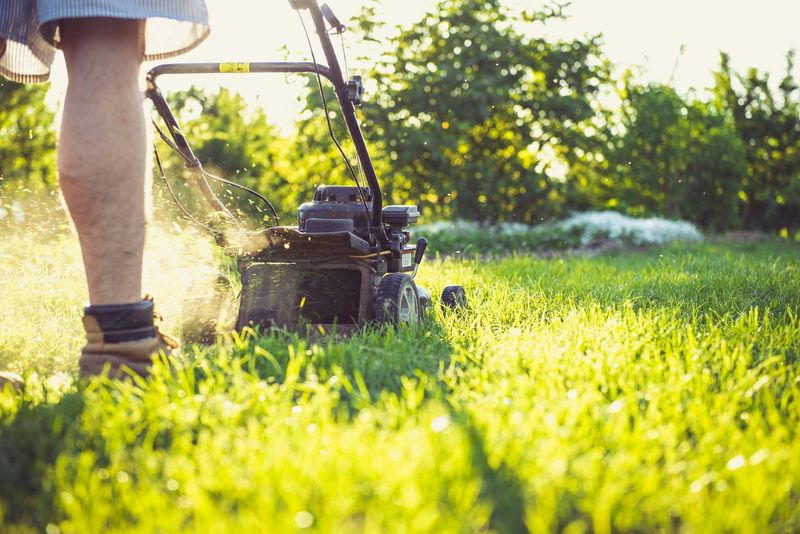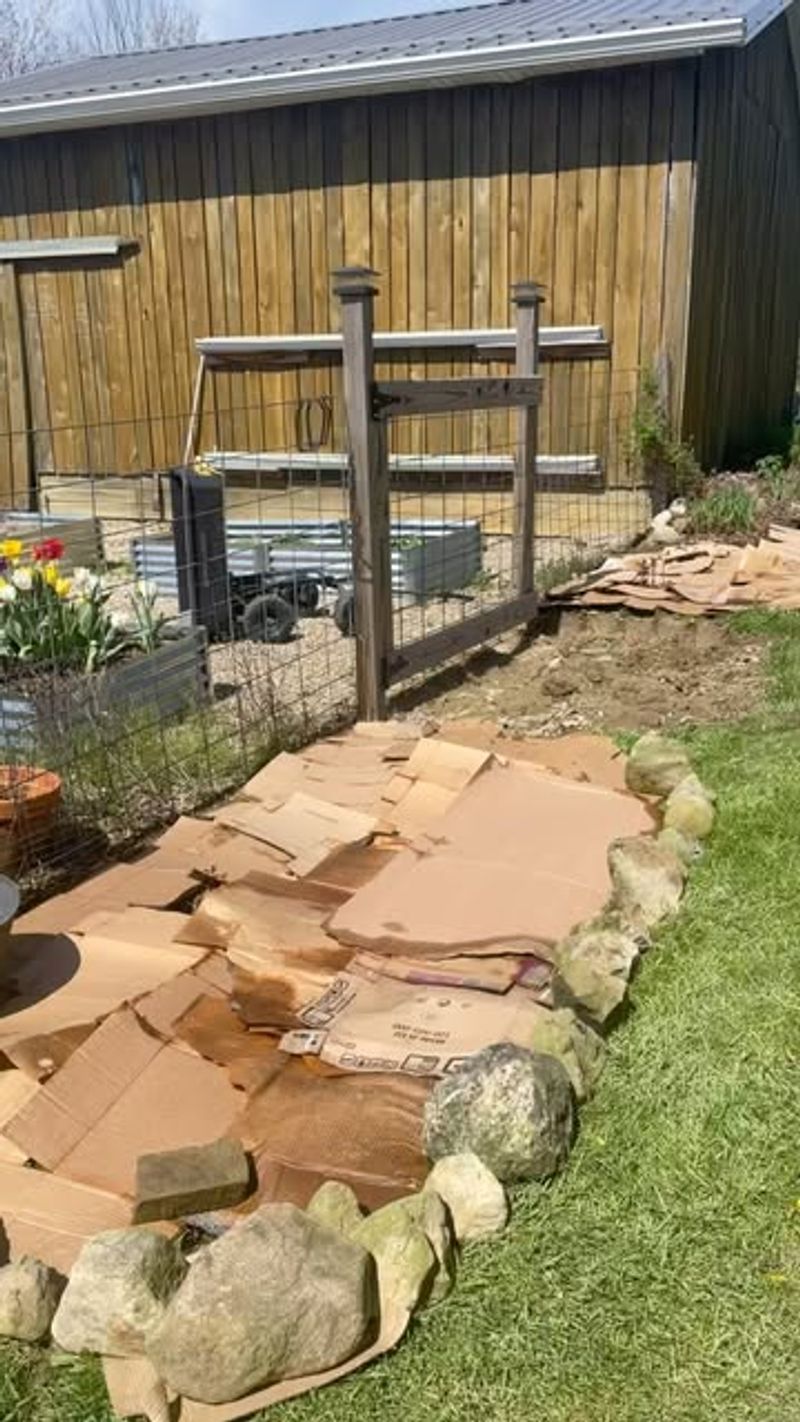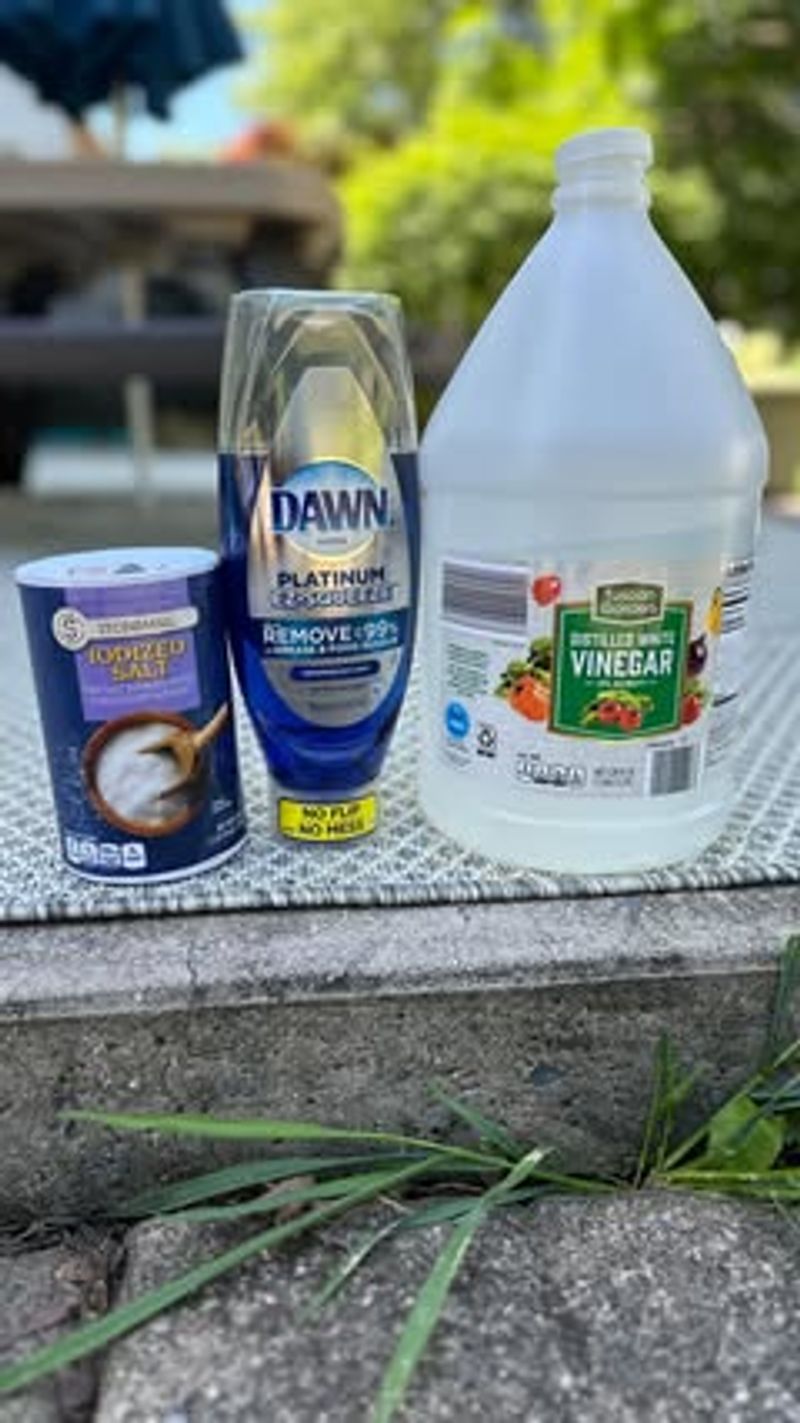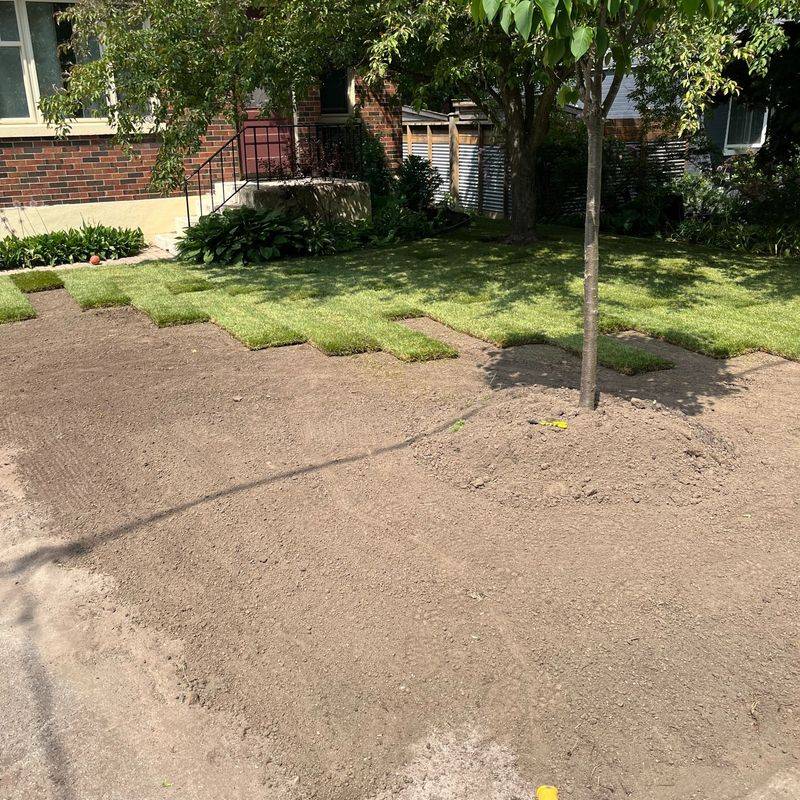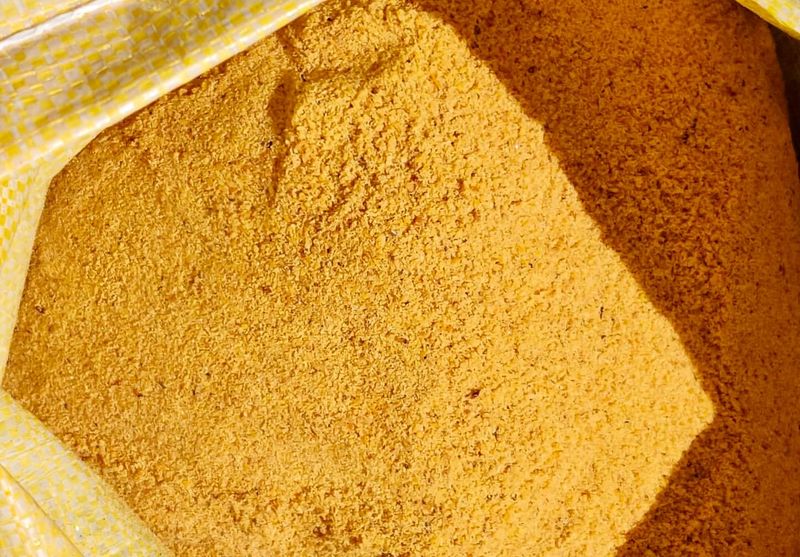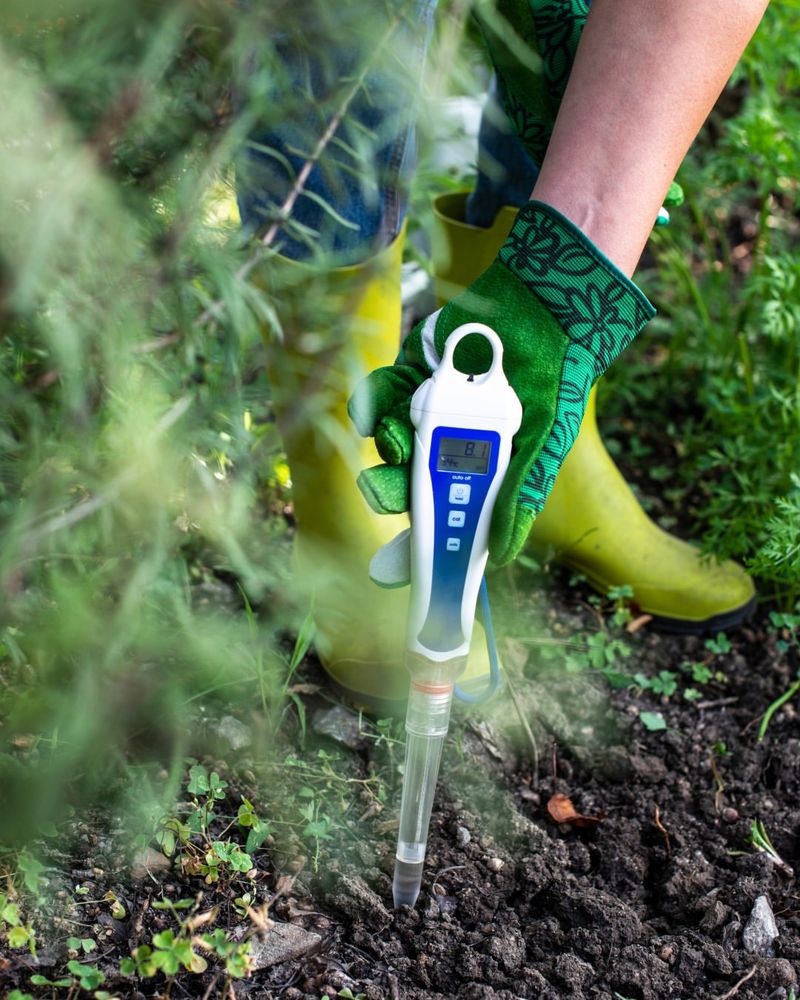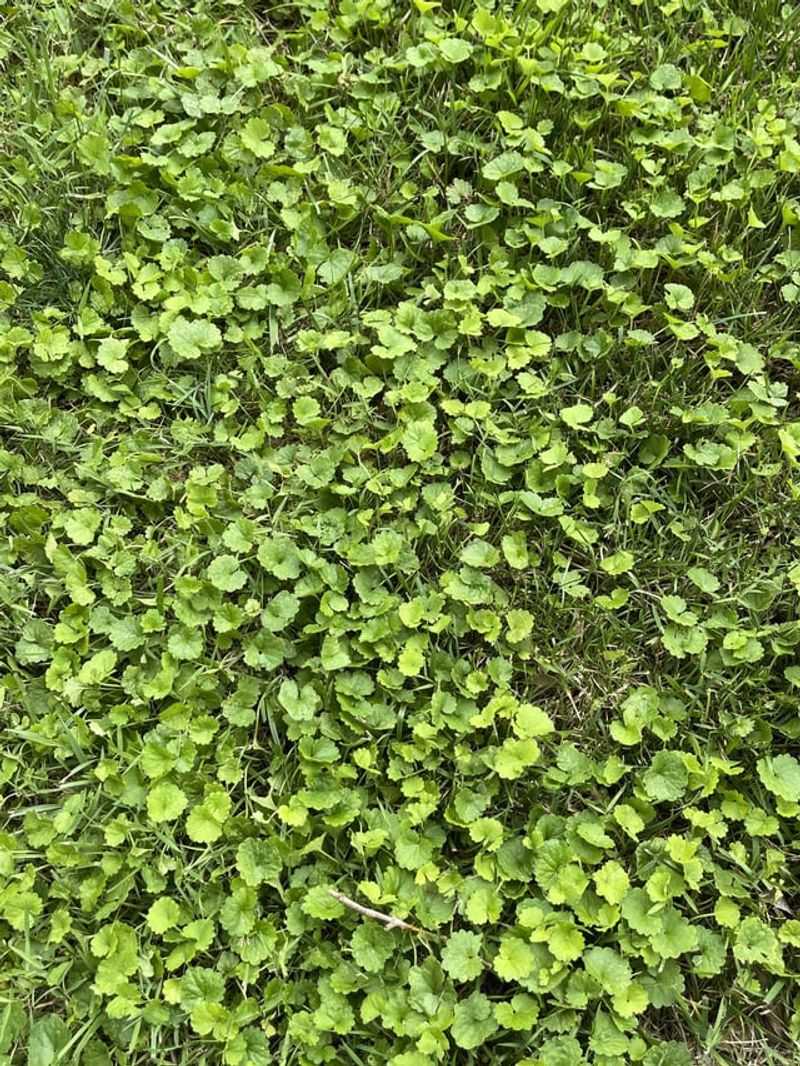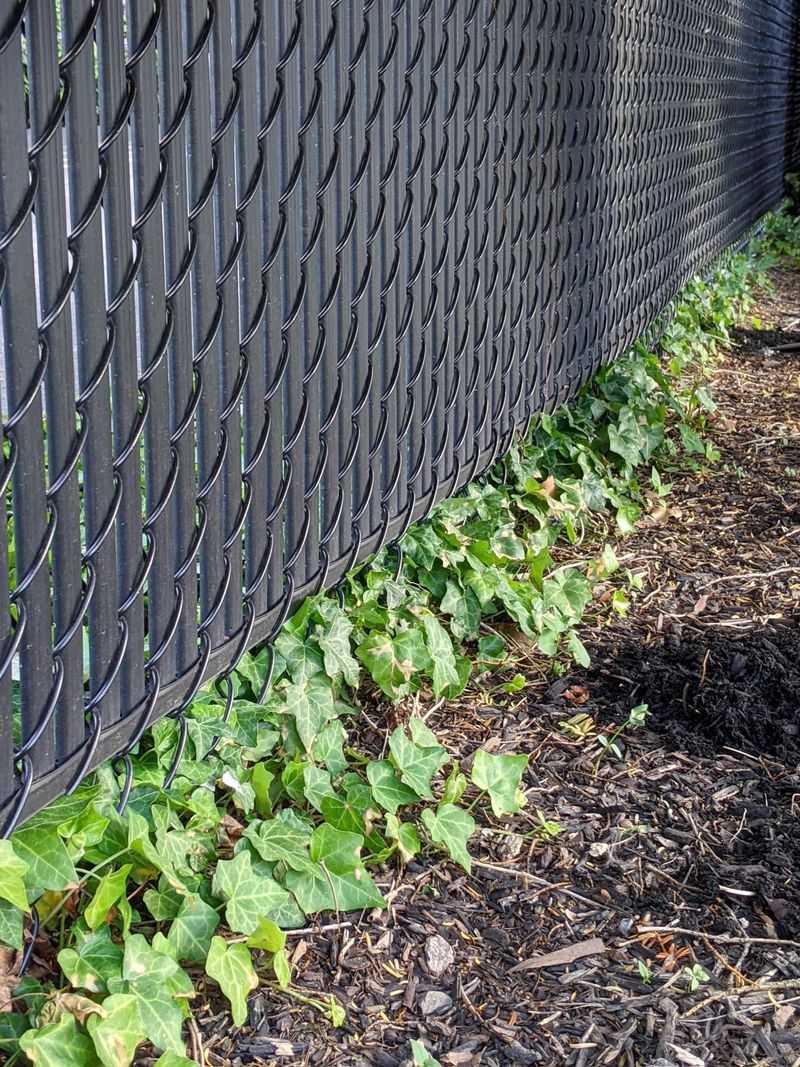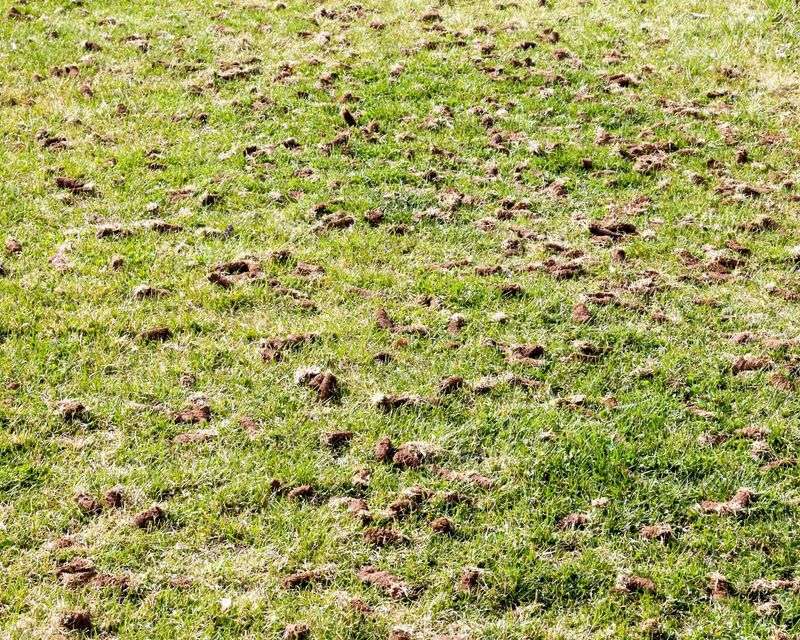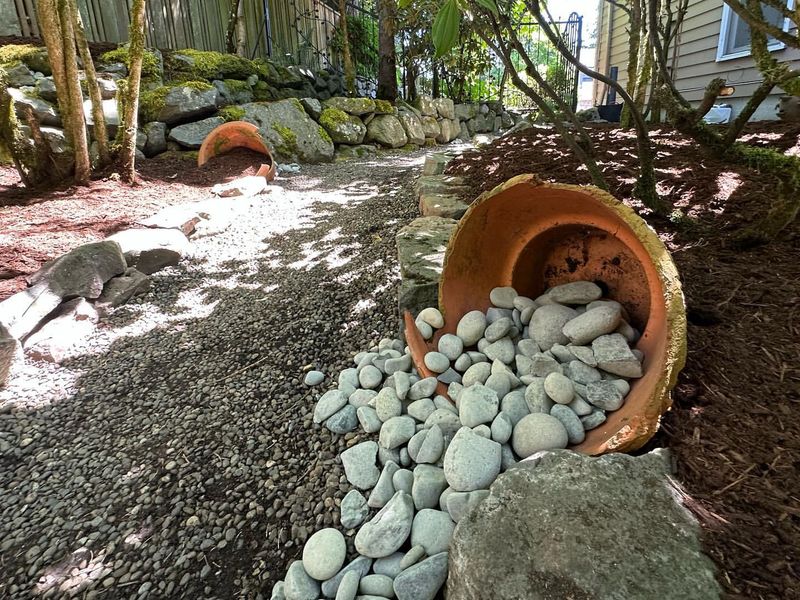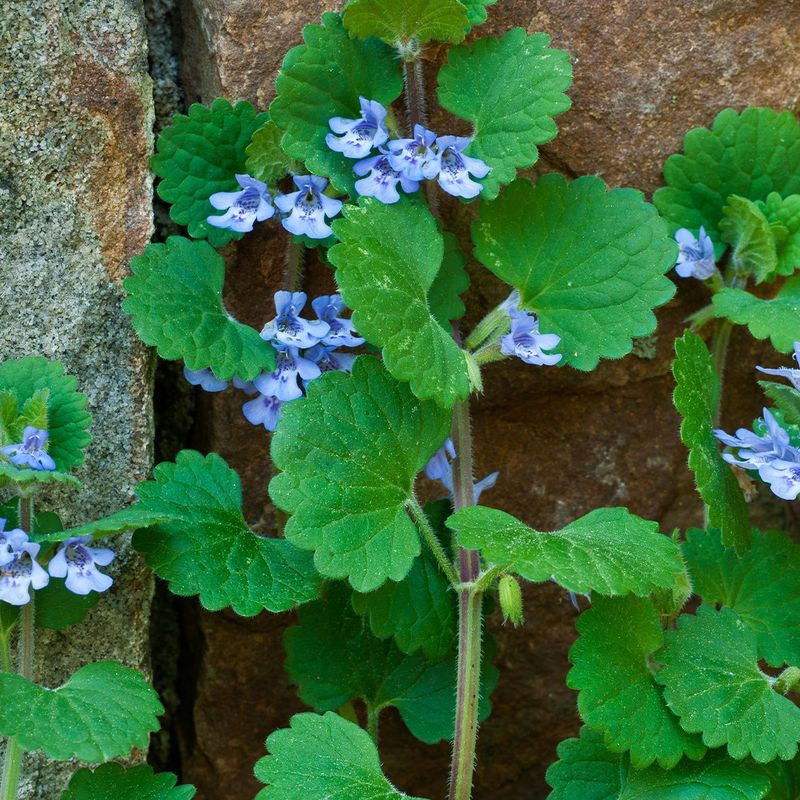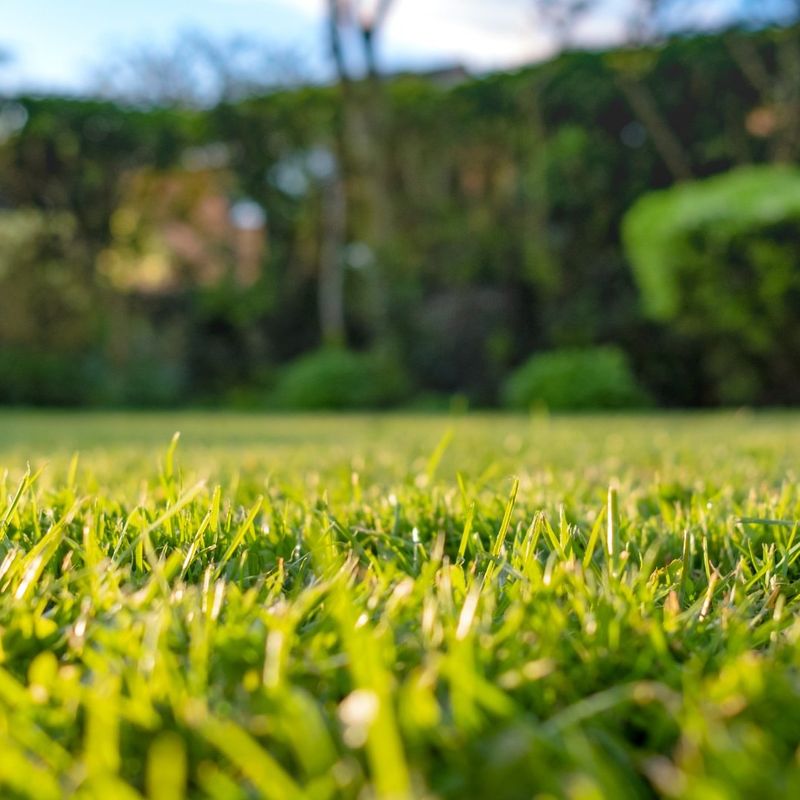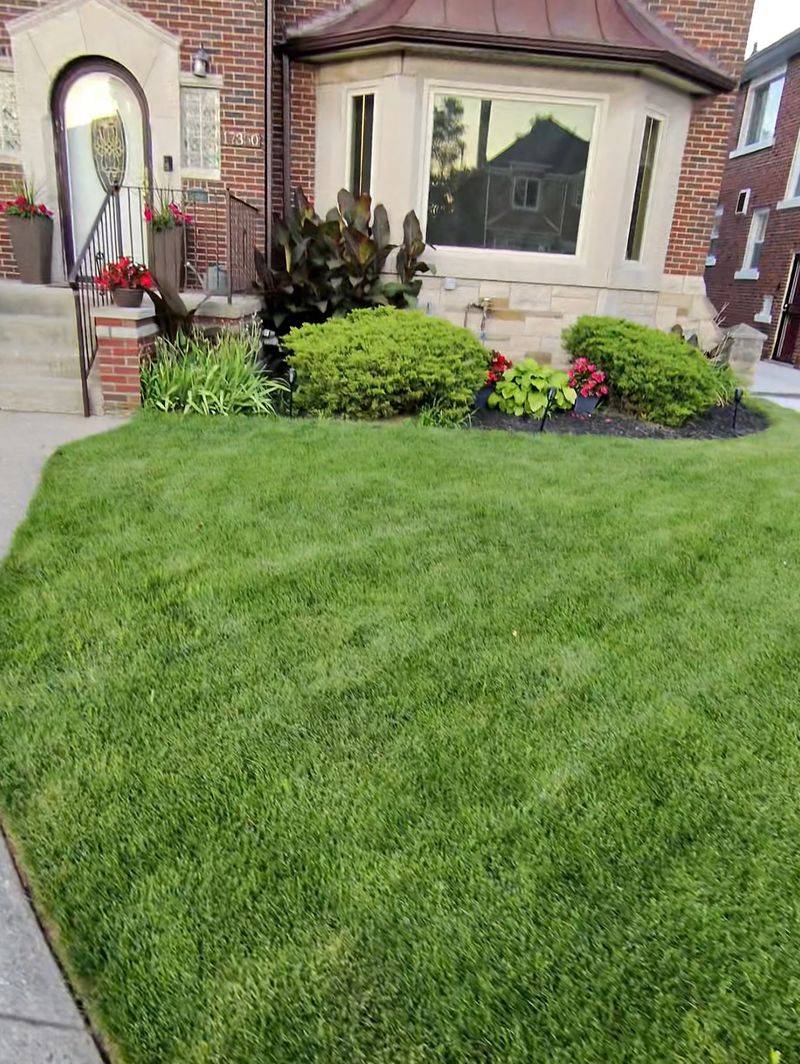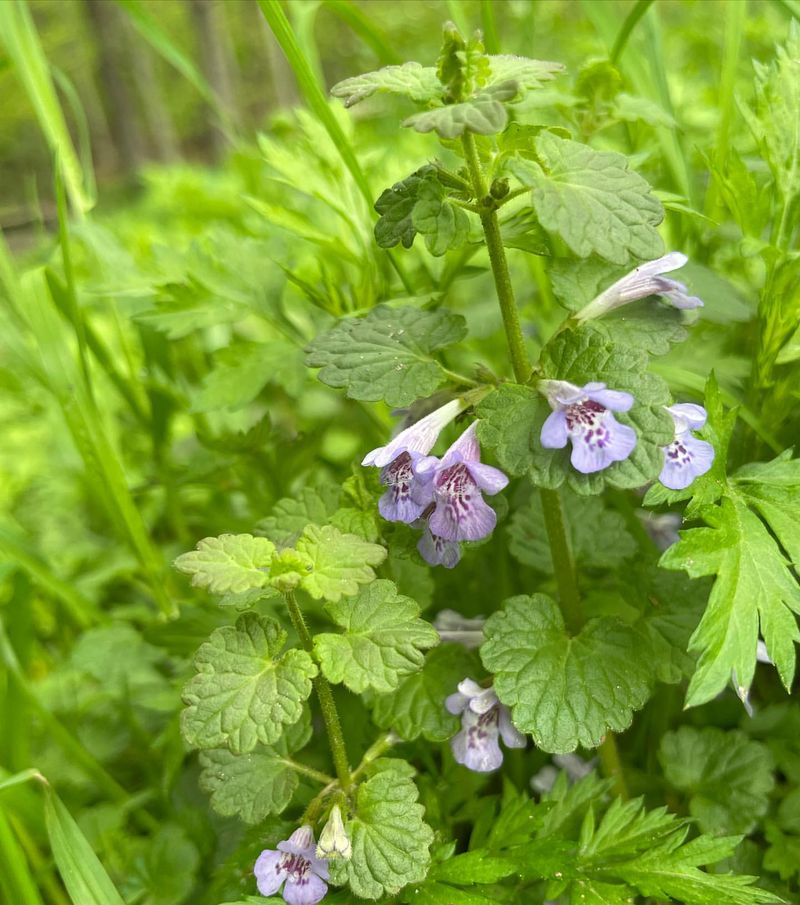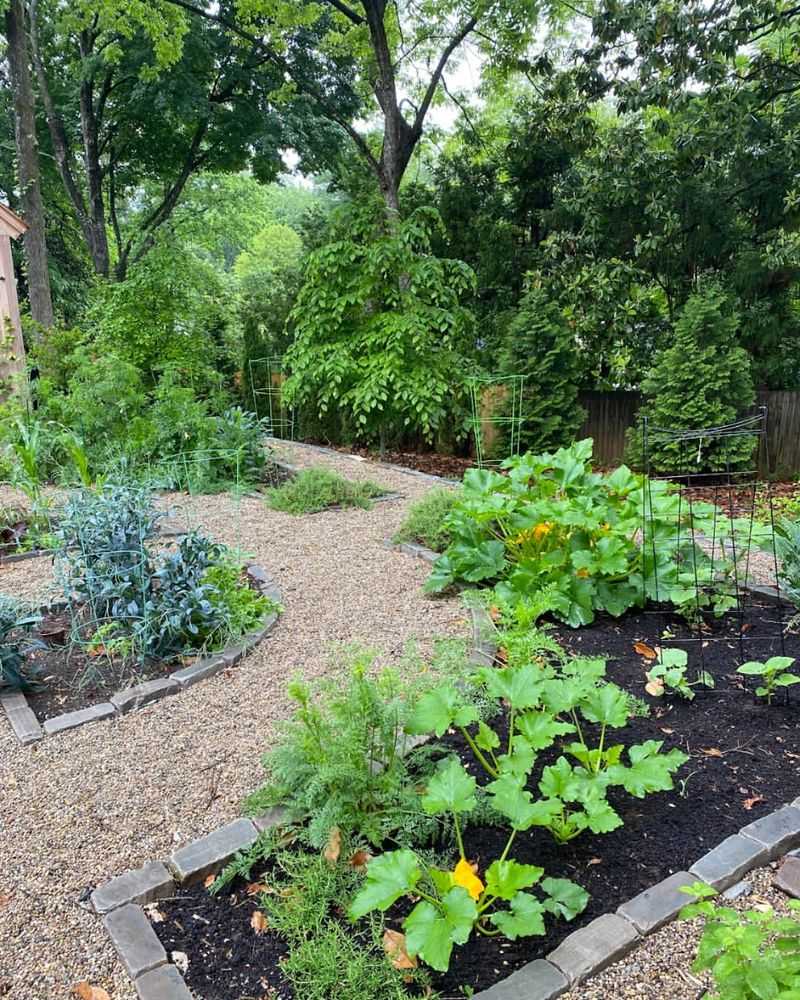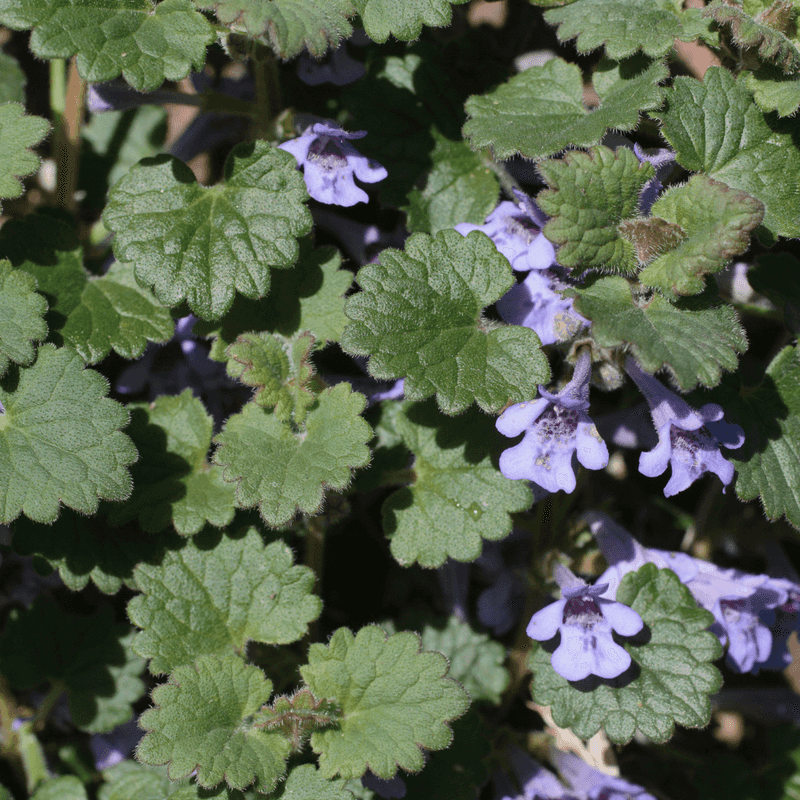Ground ivy, also called creeping charlie, is a stubborn weed that can quickly take over your beautiful New York lawn. This aggressive plant spreads through underground stems and can choke out your grass in just one season.
Tackling ground ivy early is key to maintaining a healthy, green lawn that you can enjoy all summer long.
1. Manual Removal Works Wonders
Getting your hands dirty might be your best first defense. Pull out ground ivy by hand, making sure to get all the roots and runners. In New York, the best time is after a good rain when the soil is moist and the roots come up easily.
Store the pulled weeds in a garbage bag—never your compost pile! Ground ivy can regrow from the smallest pieces left behind. Regular hand-pulling sessions throughout spring and summer will gradually weaken the plant’s hold on your lawn.
2. Boost Your Mowing Strategy
Raising your mower blade might seem counterintuitive, but taller grass creates shade that ground ivy hates. Set your mower to 3-3.5 inches high during the growing season to give your lawn the advantage.
Mow regularly but never remove more than one-third of the grass height at once. This stress-free cutting schedule strengthens your lawn while weakening the ivy. A healthy, thick lawn naturally crowds out unwanted invaders like ground ivy.
3. Smother With Mulch Barriers
For ground ivy invading garden beds rather than lawns, mulch can be your secret weapon. Lay down several layers of newspaper or cardboard over the infested area, then cover with 3-4 inches of organic mulch.
The light-blocking barrier stops photosynthesis and eventually kills the ivy. Leave this barrier in place for at least one full growing season. This method works particularly well in flower beds and around trees where the ivy often starts before spreading to your lawn.
4. Vinegar Spray Solutions
Common household vinegar makes an effective natural herbicide. Mix one gallon of white vinegar with one cup of table salt and a tablespoon of dish soap. The soap helps the solution stick to the ivy’s leaves while the vinegar and salt do the killing work.
Spray directly on ground ivy leaves on a sunny, dry day for maximum effectiveness. Be careful though – this mixture kills any plant it touches! Apply with precision using a spray bottle with a stream setting rather than a mist to minimize drift.
5. Overseed Bare Patches Immediately
Ground ivy loves to colonize bare spots in your lawn. After removing ivy patches, immediately fill in those areas with grass seed suitable for New York’s climate. Tall fescue and perennial ryegrass varieties establish quickly and compete well against invasive weeds.
Prepare the soil by loosening it lightly, then spread seed at the recommended rate. Keep newly seeded areas consistently moist until established. This proactive approach prevents the ivy from simply reclaiming its territory and creates a stronger overall lawn.
6. Corn Gluten Meal Application
Corn gluten meal serves double duty as both a natural pre-emergent herbicide and a nitrogen-rich fertilizer. Apply it in early spring before ground ivy seeds germinate at a rate of 20 pounds per 1,000 square feet of lawn.
The corn gluten prevents new weed seeds from developing roots while feeding your existing grass. This organic option works best as a preventative measure rather than a cure. For established New York lawns, apply in April and again in late August for year-round protection.
7. Adjust Soil pH Levels
Ground ivy thrives in acidic soil conditions common in many New York lawns. Testing your soil pH can reveal if this is contributing to your ivy problem. Most grass varieties prefer a pH between 6.0 and 7.0, while ground ivy loves more acidic conditions.
Apply lime according to your soil test results to raise pH levels. This simple adjustment makes your lawn more hospitable to grass and less friendly to ground ivy. For most lawns, 50 pounds of lime per 1,000 square feet will raise pH by approximately one point.
8. Targeted Borax Treatments
Common household borax can effectively control ground ivy when used correctly. Mix 10 ounces of borax with 4 ounces of warm water until dissolved, then dilute in 2.5 gallons of water. This amount treats 1,000 square feet of lawn.
Apply with a sprayer on a windless day, focusing directly on ivy patches. Use this treatment only once per year – borax can build up in soil and damage grass if overused. The boron in borax disrupts the ivy’s cellular structure while being relatively gentle on established turf.
9. Install Physical Barriers
Ground ivy often invades from neighboring properties or untended areas. Installing underground barriers along property lines can prevent this sneaky spread. Use landscape edging that extends 6-8 inches below the soil surface.
Metal, plastic, or concrete edging all work effectively. Make sure the barrier extends slightly above ground level too. This physical blockade stops the ivy’s creeping stems from crossing boundaries, giving you a fighting chance to manage what’s already in your yard without constant reinvasion.
10. Aerate Compacted Soil
Ground ivy loves compacted soil where grass struggles to grow. Core aeration – removing small plugs of soil across your lawn – creates space for grass roots to expand and access more nutrients, water, and oxygen.
Rent an aerator in early fall or spring and make several passes over problem areas. The resulting stronger grass will naturally compete better against ground ivy. As a bonus, aeration also improves drainage and reduces thatch buildup, creating overall healthier growing conditions for your desired lawn plants.
11. Correct Drainage Issues
Standing water and consistently damp areas create perfect conditions for ground ivy to thrive. Identify and fix drainage problems by regrading low spots or installing French drains in severely affected areas.
For minor issues, simply reducing irrigation frequency can help. Water deeply but less often to encourage grass roots to grow deeper while keeping surface soil drier. Ground ivy has shallow roots that depend on consistent moisture, so changing your watering habits can significantly impact its ability to spread.
12. Apply Selective Herbicides
When natural methods aren’t enough, selective herbicides containing triclopyr or dicamba can target broadleaf weeds like ground ivy while sparing your grass. In New York, fall application (September–October) often works best, as the ivy is actively storing nutrients for winter.
Always follow label directions precisely and apply on a calm day to prevent drift. Most products require temperatures between 60–80°F for optimal effectiveness. Expect to need multiple applications spaced 2–3 weeks apart for stubborn infestations, as ground ivy can be remarkably resilient in many New York lawns.
13. Proper Fertilization Timing
Fertilizing at the right time gives your lawn the competitive edge over ground ivy. For New York lawns, focus on fall fertilization (September and November) rather than heavy spring feeding, which can actually benefit weeds more than grass.
Choose a slow-release fertilizer with higher nitrogen content. This approach strengthens grass roots during winter dormancy, resulting in thicker spring growth that naturally suppresses ground ivy. Healthy, well-fed grass produces more tillers (lateral shoots) that fill in spaces where weeds might otherwise establish.
14. Introduce Beneficial Nematodes
These microscopic organisms offer a fascinating biological control option. Certain nematode species target soil-dwelling insects that create lawn damage, which often creates entry points for ground ivy invasion.
Apply beneficial nematodes when soil temperatures are between 55-85°F, typically late spring through early fall in New York. Water the area before and after application. While not directly attacking the ivy, this method addresses underlying insect problems that weaken lawns and create opportunities for weeds to establish.
15. Solarize Severe Infestations
For truly overwhelming ground ivy problems, soil solarization offers a reset button. Cover the affected area with clear plastic sheeting during the hottest part of summer (June-August in New York), securing the edges with rocks or soil.
Leave in place for 4-6 weeks. The trapped heat literally cooks the ivy and its seeds. This method works best for smaller sections rather than entire lawns. After removing the plastic, wait two weeks before reseeding with grass to ensure all decomposition processes have completed.
16. Maintain Proper Shade Levels
Ground ivy thrives in shady areas where grass struggles. Prune low-hanging tree branches to allow more sunlight to reach your lawn – aim for at least 4-6 hours of direct sun daily for most grass varieties.
In deeply shaded areas where grass simply won’t thrive, consider shade-tolerant groundcovers as alternatives. Options like wild ginger, sweet woodruff, or Pennsylvania sedge create dense coverage that can outcompete ground ivy while thriving in low-light conditions typical of many New York yards.
17. Try Horticultural Vinegar Solutions
Stronger than household vinegar, horticultural vinegar contains 20–30% acetic acid and delivers more powerful weed-killing results. Always wear protective gear, including gloves and eye protection, when handling this caustic solution. In New York’s humid late summer, apply directly to ground ivy leaves using a sprayer with a precise stream setting.
The high acid content burns plant tissues on contact. This method works best on warm, sunny days when plants are actively growing. Remember that horticultural vinegar is non-selective and will damage any plant it contacts.

